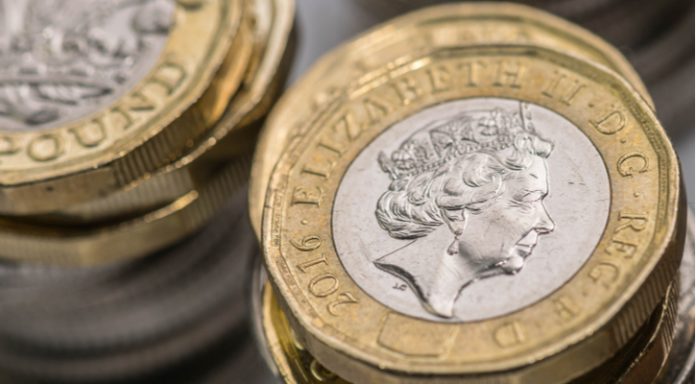The pound grinded southwards versus the dollar on Wednesday. The pound US dollar exchange rate hit a low of US$1.2868, its lowest level since early September. This is meant the pound lost 0.8% versus the dollar, with losses for the week totalling 1.3% so far.
| What do these figures mean? |
|---|
|
When measuring the value of a pair of currencies, one set equals 1 unit and the other shows the current equivalent. As the market moves, the amount will vary from minute to minute. For example, it could be written: 1 GBP = 1.28934 USD Here, £1 is equivalent to approximately $1.29. This specifically measures the pound’s worth against the dollar. If the US dollar amount increases in this pairing, it’s positive for the pound. Or, if you were looking at it the other way around: 1 USD = 0.77786 GBP In this example, $1 is equivalent to approximately £0.78. This measures the US dollar’s worth versus the British pound. If the sterling number gets larger, it’s good news for the dollar. |
The pound was under pressure as investors looked ahead to UK Prime Minister Theresa May’s showdown with her backbenchers. Theresa May met with the so called 1922 Committee late on Wednesday, in an attempt to win them over on Brexit. The PM had been told to bring her own noose to the event, highlighting how fragile her grip on power was and is.
Despite days of speculation that a coup against Theresa May was imminent, the PM received a warm reception from her backbenchers. The fierce opposition was nowhere to be seen and instead a sense of unity broke out within the UK Conservative party. Even though Brexit is in a dismal state, the party realises that ousting its leader will do nothing to change that.
| How does political risk have impact on a currency? |
|---|
| Political risk drags on the confidence of consumers and businesses alike, which means both corporations and regular households are then less inclined to spend money. The drop in spending, in turn, slows the economy. Foreign investors prefer to invest their money in politically stable countries as well as those with strong economies. Signs that a country is politically or economically less stable will result in foreign investors pulling their money out of the country. This means selling out of the local currency, which then increases its supply and, in turn, devalues the money. |
The improved domestic political scene lifted the pound off its lows. With no UK economic data due for release today, the focus will remain firmly on Brexit.
Will Durable Goods Data Send Dollar Lower?
The dollar was on the rise thanks to its safe haven status even though economic data disappointed. The dollar is the world’s reserve currency and so in times of geopolitical tension investors generally look to buy into the dollar.
Geopolitical tensions are rife. Italy’s standoff with Brussels, Brexit, US pulling out of a nuclear deal with Russia and Saudi Arabia involved in “the worst cover-up in history” according to President Trump.
Today the US economic calendar is full, providing plenty of distraction to investors. Analysts are expecting durable goods orders to have dropped considerably in September to just -1.5%, down from 4.4% in August. A weak reading could send the dollar southwards. Investors pay attention to durable goods data because these products require a large investment. This means that when consumers start to get nervous over the outlook for the economy these products are the first to be impacted.
| Why does poor economic data drag on a country’s currency? |
|---|
| Slowing economic indicators point to a slowing economy. Weak economies have weaker currencies because institutions look to reduce investments in countries where growth prospects are low and then transfer money to countries with higher growth prospects. These institutions sell out of their investment and the local currency, thus increasing supply of the currency and pushing down the money’s worth. So, when a country or region has poor economic news, the value of the currency tends to fall. |
This publication is provided for general information purposes only and is not intended to cover every aspect of the topics with which it deals. It is not intended to amount to advice on which you should rely. You must obtain professional or specialist advice before taking, or refraining from, any action on the basis of the content in this publication. The information in this publication does not constitute legal, tax or other professional advice from TransferWise Inc., Currency Live or its affiliates. Prior results do not guarantee a similar outcome. We make no representations, warranties or guarantees, whether express or implied, that the content in the publication is accurate, complete or up to date. Consult our risk warning page for more details.
This article was initially published on TransferWise.com from the same author. The content at Currency Live is the sole opinion of the authors and in no way reflects the views of TransferWise Inc.





